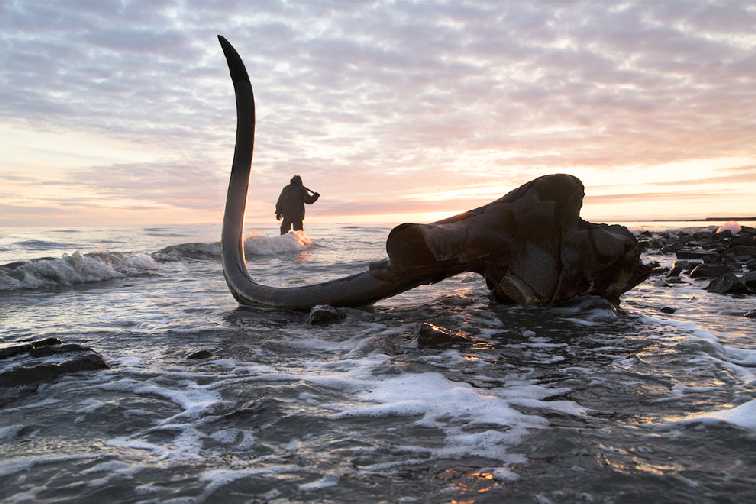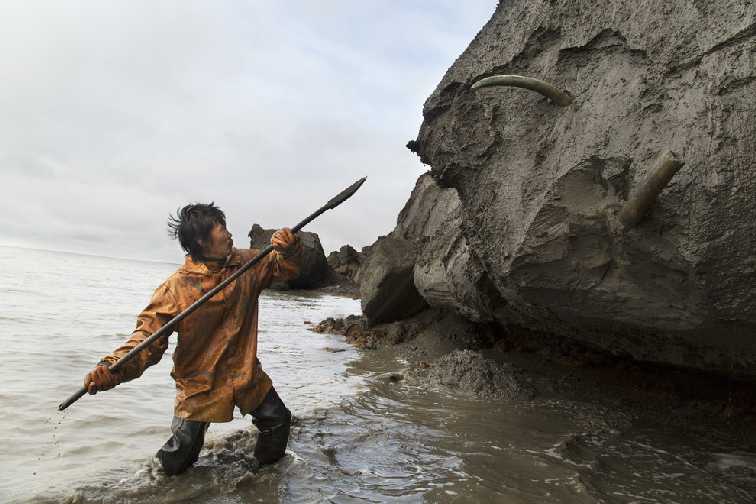
Woolly Mammoths roamed northern Siberia during the historic Pleistocene period (2,588,000 to 11,700 years ago) but died off about 10,000 years ago, decimated by climate change and at the hands of human predators.
If one subscribes to the hypothesis that (a) climate change is occurring and (b) climate change may be cyclical, then it could be reasonable to suppose that given scientific ability to recreate Mammoth via DNA cloning, that scenario could be a possibility when Siberia's climatic conditions again become similar to that of the Pleistocene epoch.
Isolated populations lingered on islands to the North and East, the last of which died out some 3,700 years ago leaving the species extinct. In Siberia today where there is believed to be millions of mammoth tusks remaining buried in the permafrost a mammoth tusk ivory trade has been established.
Notwithstanding that the trade of elephant ivory is strictly illegal in terms of the CITES convention (Convention on International Trade in Endangered Species of Wild Fauna and Flora), trade in mammoth tusks continues to boom and is unaffected by CITES.

Tusks can spiral to more than 4 meters and can earn hunters potentially more than $60,000 for individual tusks. Once discovered, the tusks can take anywhere from several hours to several days to be fully extracted from the permafrost cliffs.

There are historical records of mammoth ivory being traded as early as 1611 and at times it was sufficiently plentiful to be used for the manufacture of piano keys etc. Estimates put the number of mammoths found over the last 250 years at almost 500,000.

There doesn’t appear to be a down-side to this trade indeed it is proving very economically beneficial for the people of Arctic Siberia including the native Yakuts, an Asiatic ethnic group which speaks a language of Turkic origin.
Rejigit is disappointed to note that in excess of 90% of the estimated sixty tons of tusks recovered each year finds its way to China. It is to be hoped that at some future time Siberian people may be in a position to add value to the resource before on-selling it.

The eroding beach cliffs of Bolshoy Lyakhovskiy Island have proved to be prime territory for the valuable tusks and it was there that the award winning Russian photographer / artist Evgenia Arbugaeva shot her remarkable Mammoth Hunters series of photographic images as seen in this blog post.
If you haven't already done so, you may like to read Rejigit's previous blog about Evgenia's image series entitled "Weather Man".

This very modest example (4 cm high) of Siberian artisan skill was given to Rejigit by a Russian visitor. The only provenance is an accompanying certificate indicating that the mammoth tusk ivory is more than 10,000 years old.
